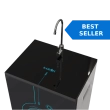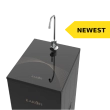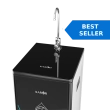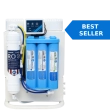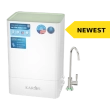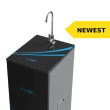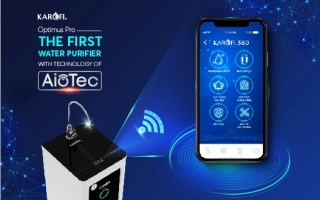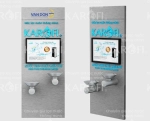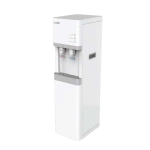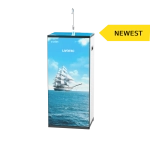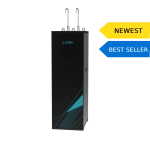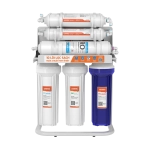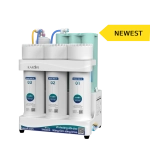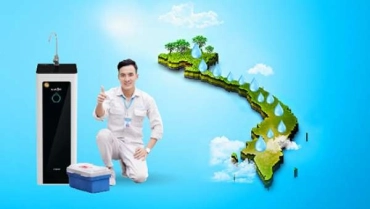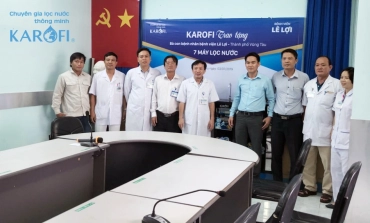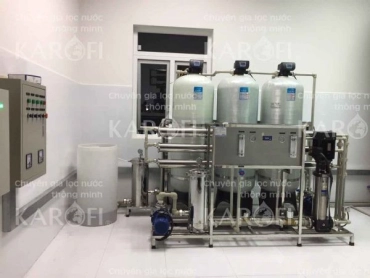Learn the characteristics of Nano filtration technology
In water treatment, a Nano filter (NF) is used to remove hardness (instead of water softener), remove pesticides and reduce color. This technology is also applied to nano water purifier devices, along with Karofi to learn the characteristics of this filtration technology through the article below!

1. Application of Nano filtration technology:
Desalination of food, milk and beverages or by-products.
Desalination a part of whey, UF absorb or retain as required
Desalting dyes and optical brighteners
Remove nitrate / Nitrite in drinking water.
Eliminate pesticides.
Nanofiltration is often used to remove impurities sized in the range of 0.5-10nm and will remove all sugar molecules and polyvalent ions, only single ions and water can pass through. . Nanofilter filtration capacity is determined by two different parameters. First, retention depends on the compound size or molecular weight. Monovalent ions can most likely pass through an unobstructed nanofilter while most covalent ions (like sulfates and carbonates) are trapped. For anions, the filtration capacity of nanofilters increases in the following order: nitrate, chloride, hydroxide, sulfate, carbonate, phosphate. For cations, the filtration capacity of nanofilters increases in the following order: proton, sodium, potassium, calcium, magnesium, copper, iron.

2. Benefits of nano filtration
Low operating costs
Low energy costs
Less waste water
Reducing the total amount of dissolved solids (TDS) of brackish water
Reducing pesticides and VOCs (organic chemicals)
Heavy metal reduction
Reduce nitrate and sulfate
Reduce tannins and turbidity
Soften hard water
No chemicals (ie no salt or chemicals used).
3. Learn about nanofiltration technology and other common technologies
Ultrafiltration system (UF)
Ferrous rust, sediments, suspended materials, colloids, bacteria, molecular organic matter and other harmful substances in water can be filtered out, and some mineral elements are beneficial to the human body. can be withheld. The recovery rate of water during ultrafiltration is as high as 95%, the service life is relatively long. Therefore, the future filtration of drinking water will be based on ultrafiltration technology, combined with other filtration materials, to increase the efficiency of filtration and remove pollutants in the water more comprehensively.
Nano filtration
The filtration capacity of nano water purifier is the average point between ultrafiltration and reverse osmosis RO water purifier, the desalination rate is lower than RO. The water recovery rate is 70%, which means that, in the process of filtering water with nano membranes, nearly 30% of tap water will be wasted.
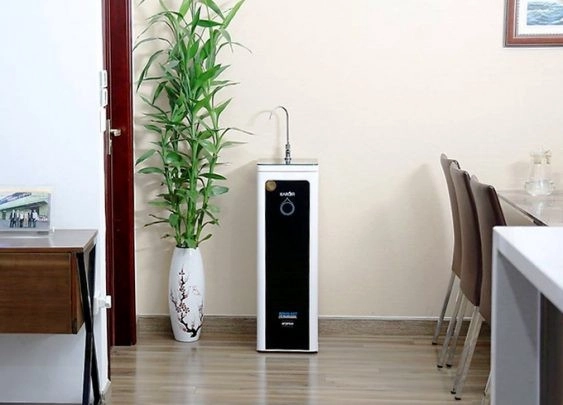
Reverse Osmosis (RO)
In the early 1960s, the United States developed a highly efficient water filtration technology that uses differential pressure. It can filter almost all impurities in the water, only water molecules are passed through. RO filtration technology is commonly used to purify pure water, industrial ultrapure water and pharmaceutical ultrapure water. Reverse osmosis technology needs to be pressurized, electrified.
Micro filter
Conventional PP filter, activated carbon water filter core, ceramic filter are microfiltration technology, used to filter coarse, rust filter but can not remove harmful substances such as bacteria in water. PP cotton core: usually used only for coarse filtration requirements, remove sediment in water, rust. Activated carbon: can eliminate the smell of water. But bacteria in the water cannot be removed, and the removal of sediment and rust is also very poor. Ceramic filter cartridge: impurities filtered size is only 0.1 micron, flow rate is usually small and not easy to clean.
Nguồn: https://karofi.com
